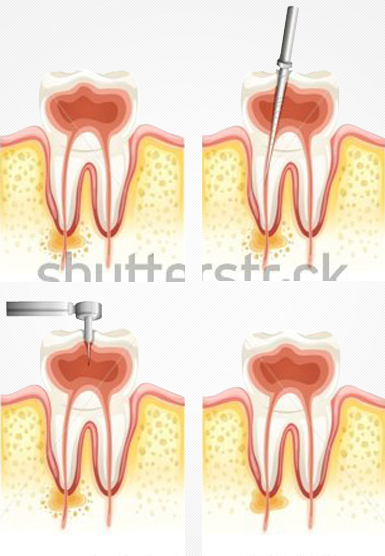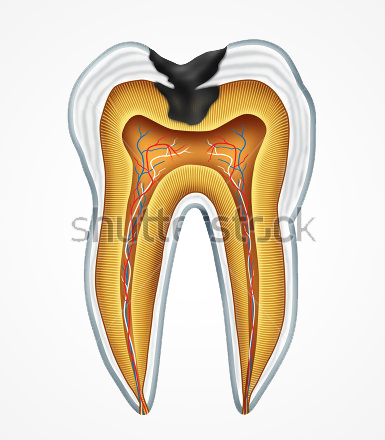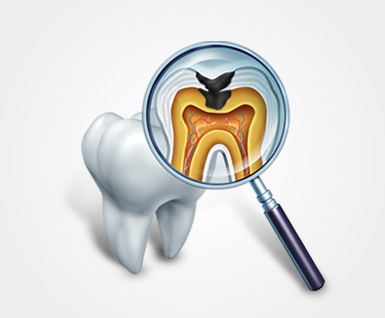-

Opening Hours
view our working time
-
Call us: +91 4936208777
+919562488777
Endodontics
- Root Canal Treatment
As Technology in dentistry advances, we approach our treatment techniques in different manners. In many special cases, we perform the entire root canal treatment in a single sitting and that too with an antibiotic coverage for about 2-3 days depending on the type of decay and oral health of the patient. In our single sitting RCT process, only mild pain relievers might be required
How is a Root Canal done?
Root canal treatment consists of several steps that take place over several office visits, depending on the situation. These steps are:
An opening is made through the back of a front tooth or the crown of a molar or pre-molar. After the diseased pulp is removed (a pulpectomy), the pulp chamber and root canals are cleaned, enlarged and shaped in preparation for being filled. If more than one visit is needed, a temporary filling is placed in the crown opening to protect the tooth between dental visits. The temporary filling is removed and the pulp chamber and root canal permanently filled. A tapered, rubbery material called gutta-percha is inserted into each of the canals and is often sealed into place with cement. Sometimes a metal or plastic rod is placed in the canal for structural support. In the final step, a crown is usually placed over the tooth to restore its natural shape and appearance. If the tooth is very broken down, a post may be required to build it up prior to placing a crown.-

Step1
-

Step2
-

Step3
-

Step4

-
- Single Sitting Root Canal Treatment

Mulitple Dental Tooth Implants are done when replacing several gaps if teeth. If there are missing gaps together, dental tooth implants with a bridge may be done. An implant bridge will consist of the crowns on dental tooth implants as well as pontic crowns. A pontic crown is a dental crown that is joined together to the anchor crowns on the dental tooth implants in forming a dental bridge.
Advantages of Single Visit Root canal
This treatment is done to avoid multiple injections & multiple visits, thus reducing the patient apprehension Absolutely painless and extremely comfortable. Generally completed in a single sitting of half an hour to one hour. Four to seven root canals can be performed in a single sitting. Pain is always associated with root canals, but should actually be little to no pain during single sitting procedureAll single sitting root canals are done in our clinic by experienced endodontists who exclusively practice root canals. The procedure is not for cosmetics, but rather your health. The infection will only get worse with time if left untreated. The biggest advantage is that the tooth will not need to be extracted in the future.
- Apicoectomy

An apicoectomy is a procedure in which the endodontist opens the gum tissue near the tooth to see the underlying bone and to remove any inflamed or infected tissue. The very end of the root is also removed. n apicoectomy may be needed when an infection develops or persists after root canal treatment,or retreatment. During root canal treatment, the canals are cleaned, and inflamed or infected tissue is removed. Root canals are very complex, with many small branches off the main canal. Sometimes, even after root canal treatment, infected debris can remain in these branches and possibly prevent healing or cause re-infection later. In an apicoectomy, the root tip, or apex, is removed along with the infected tissue. A filling is then placed to seal the end of the root.
- Pulpectomy

A pulpectomy is a dental procedure in which all of the pulp in the pulp chamber and root canal of a tooth is removed. This procedure is recommended when the pulp has become infected and the infection cannot be resolved. The goal of the procedure is to prevent the infected pulp from spreading an infection which could lead to the loss of one or more teeth.
- Apexification
Apexification is a treatment used to seal an open apex. The apex is the bottom part of a tooth’s root. Your teeth have tiny passageways called root canals. An open apex occurs when the root canals are not closed. Open root canals can lead to pulp exposure and infection. Pulp is the soft substance inside of your teeth. The pulp may be infected if an opening in the tooth allows bacteria inside.
An open apex may be found in teeth that are not fully developed. An open apex may result if the root ends are eroded away by a process called resorption. Trauma may also cause an open apex.
Ordinarily, pulp infections are treated with a root canal. An apexification is necessary if an open apex makes it too difficult to seal the root end with traditional root canal procedures. An apexification is a procedure that is used to form a hard barrier at the end of a root with an open apex.


